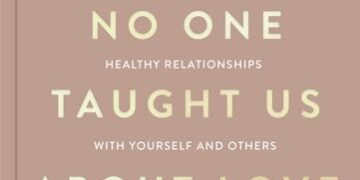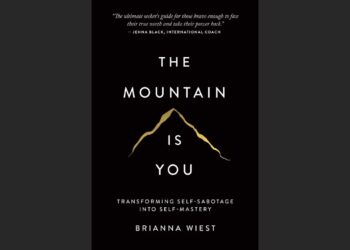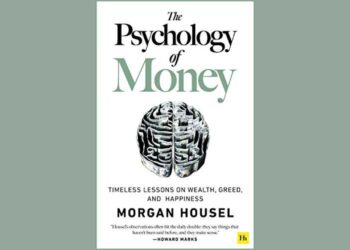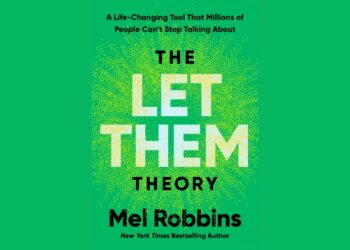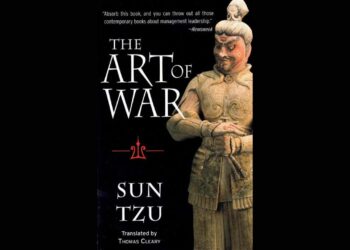Table of Contents
- Introduction: The Untold Truth About Love
- Part I: Redefining Love
- Understanding the Layers of Love
- The Conditioning We Carry
- Part II: The Power of Self-Love
- Healing Before Loving
- Emotional Awareness and Growth
- Part III: Relationships as Mirrors
- Why We Attract Certain Partners
- Healthy vs. Toxic Love
- Boundaries Are Love
- Part IV: Love in Action
- Communication as Connection
- Forgiveness and Letting Go
- Love as a Daily Practice
- Part V: Expanding Love Beyond the Self
- Universal Compassion
- Love and Spiritual Growth
- Key Lessons from the Book
- Conclusion: Becoming Love
Introduction: The Untold Truth About Love
In Things No One Taught Us About Love, Vex King delivers a profound exploration of love that goes beyond fleeting romance or conventional relationship advice. This book is not just about romantic love—it’s about self-love, healing, and the deeper truths that make love authentic and transformative. King challenges our assumptions about love, urging us to examine the beliefs, habits, and patterns that either nurture or sabotage our connections.
Love, according to King, is not merely an emotion or a magical feeling. It’s a practice, a mindset, and a way of being that begins with understanding ourselves. Through personal insights, philosophical reflections, and actionable guidance, he teaches that we must first heal and love ourselves before we can give or receive love in its purest form.
Part I: Redefining Love
Understanding the Layers of Love
King begins by asking a fundamental question: What is love, really?
He dismantles the cultural myths that portray love as instant chemistry or a fairy-tale ending. Instead, he defines love as a conscious choice to nurture growth, understanding, and compassion—for ourselves and others.
Love is not a single experience but a spectrum:
- Self-love: the foundation of all relationships.
- Romantic love: a partnership built on respect and mutual growth.
- Universal love: compassion for humanity and life itself.
Key Insight:
“Love is not found; it is created through intention, awareness, and action.”
The Conditioning We Carry
From childhood, we inherit beliefs about love from family, culture, and media. These subconscious lessons shape how we approach relationships—often leading to unhealthy patterns. King invites readers to unlearn these inherited scripts and examine:
- Fear of abandonment
- Attachment styles (anxious, avoidant, secure)
- Unrealistic expectations of perfection
Healing begins when we recognize these hidden influences and choose to rewrite our narrative.
Part II: The Power of Self-Love
Healing Before Loving
King argues that self-love is the prerequisite for healthy love. Without it, relationships become a search for validation rather than an exchange of genuine care. He outlines key practices:
- Acceptance: Embrace your imperfections and past mistakes.
- Boundaries: Protect your energy by saying no when necessary.
- Compassion: Treat yourself with the kindness you offer others.
Quote:
“The way you love yourself sets the standard for how others will love you.”
Emotional Awareness and Growth
Love requires emotional intelligence. King encourages readers to cultivate:
- Mindfulness: Observing emotions without judgment.
- Responsibility: Owning your reactions instead of blaming others.
- Inner Dialogue: Replacing self-criticism with supportive thoughts.
Through meditation, journaling, and reflection, we can heal wounds and create a stable inner foundation.
Part III: Relationships as Mirrors
Why We Attract Certain Partners
King introduces the idea that relationships mirror our inner world. We often attract partners who reflect our unresolved issues or unhealed traumas. Rather than viewing this as a curse, he frames it as an opportunity for growth.
For example:
- A controlling partner may highlight your need for stronger boundaries.
- A distant partner may reveal your fear of intimacy.
The key is to approach relationships as a classroom for self-discovery, not just a source of pleasure.
Healthy vs. Toxic Love
King contrasts healthy love with toxic dynamics:
| Healthy Love | Toxic Love |
|---|---|
| Mutual respect | Power struggles |
| Emotional safety | Manipulation |
| Growth-oriented | Stagnation |
| Honest communication | Silent resentment |
He emphasizes that love is not supposed to hurt. While all relationships face challenges, consistent harm is not love. Recognizing red flags—such as gaslighting, control, or emotional neglect—is an act of self-respect.
Boundaries Are Love
Many fear that setting boundaries will push people away, but King reframes them as acts of love. Boundaries:
- Protect emotional well-being
- Promote respect
- Clarify expectations
He provides scripts and exercises for creating healthy boundaries, from small daily interactions to major life decisions.
Part IV: Love in Action
Communication as Connection
King dedicates a significant section to the art of conscious communication. Love thrives when partners:
- Listen actively without planning a rebuttal.
- Express feelings without blame.
- Validate each other’s experiences.
He suggests using “I” statements (“I feel hurt when…”) to avoid triggering defensiveness and to promote understanding.
Forgiveness and Letting Go
One of the most powerful lessons in the book is the role of forgiveness—not as a gift to others, but as liberation for ourselves. Holding onto resentment poisons love. King explains that forgiveness does not mean condoning harmful behavior; it means choosing peace over pain.
“Forgiveness frees you to love fully, starting with yourself.”
Love as a Daily Practice
Rather than treating love as a grand gesture, King encourages small, consistent actions:
- Acts of kindness
- Words of appreciation
- Quality time
- Self-care rituals
These daily habits strengthen the emotional fabric of relationships and create an environment where love can flourish.
Part V: Expanding Love Beyond the Self
Universal Compassion
King invites readers to expand their concept of love beyond personal relationships to embrace universal compassion. By practicing empathy and gratitude, we contribute to a more loving world.
This includes:
- Supporting social causes
- Helping those in need
- Cultivating non-judgment toward strangers
Love, he reminds us, is a collective energy. The more we embody it, the more we uplift humanity.
Love and Spiritual Growth
The final chapters explore love as a spiritual force. For King, love is not only human—it’s cosmic. It connects us to something greater than ourselves, whether we call it the universe, God, or life itself. By aligning with love, we align with our higher purpose.
Key Lessons from the Book
| Lesson | Explanation |
|---|---|
| Love begins with self | You cannot pour from an empty cup. |
| Healing is essential | Past wounds shape present relationships. |
| Boundaries protect love | Saying no keeps love healthy. |
| Communication builds connection | Honest dialogue is love in action. |
| Forgiveness frees the heart | Letting go of resentment creates space for love. |
| Relationships mirror growth | Partners reveal our inner world. |
| Love is practice, not magic | Daily habits matter more than grand gestures. |
| Universal compassion expands love | Loving humanity elevates personal love. |
Conclusion: Becoming Love
Things No One Taught Us About Love is not just a relationship guide—it’s a manual for living a more conscious, compassionate life. Vex King shows that love is both a personal journey and a collective responsibility. To love others well, we must first love ourselves. To love ourselves, we must heal, grow, and embrace life’s lessons with courage.
By redefining love as a practice of self-awareness, emotional intelligence, and daily action, King empowers readers to create deeper, healthier, and more authentic relationships—starting from within.
“Love is not something you find. Love is something you become.”
This book is a powerful reminder that love is more than a feeling; it is a way of being. By embodying love, we not only transform our relationships but also contribute to a more compassionate and harmonious world.
